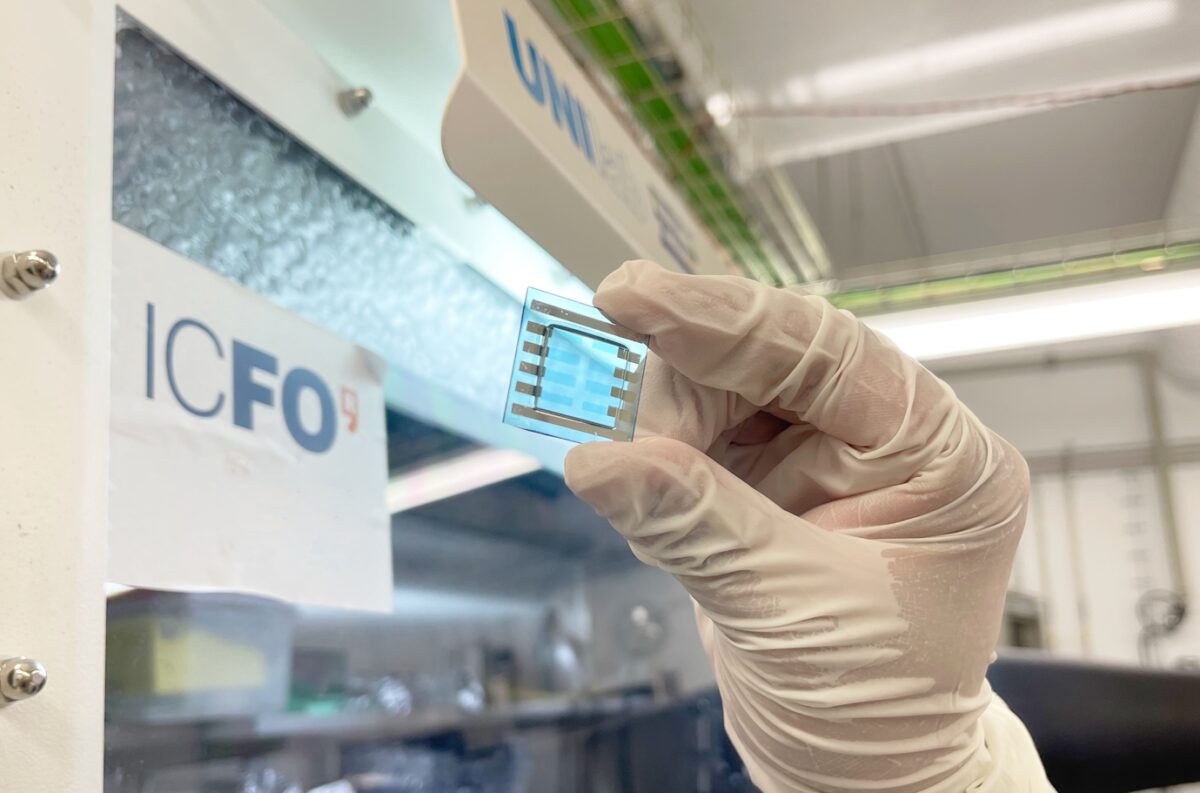A team of researchers from Spanish research center ICFO has fabricated a four-terminal organic solar cell featuring a tandem configuration with a power conversion efficiency of 16.94%.
A four-terminal tandem configuration features separate electrical connections for the transparent front cell and the opaque back cell. The configuration has been found to optimize photon absorption and enhance the overall efficiency of solar energy production when compared to a two-terminal approach.
The researchers fabricated an ultrathin transparent silver electrode, of only 7 nm. Conventional top silver electrodes typically range in thickness from 9 nm to 15 nm. The researchers say this development was “a critical component that played a pivotal role in optimizing the performance of the tandem solar cell”.
The team’s organic solar cell consisted of a PM6:L8-BO blend for the front cell, while the back opaque cell was made of a PTB7-Th:O6T-4F blend and a narrow bandgap, which the researchers said prepared the cell to better absorb the infrared part of the spectrum.
Their ultrathin transparent silver electrode was then placed at the back of the front cell, ensuring good light transmission to power the back cell. The electrode was stacked with three dielectric layers of alternating tungsten trioxide and lithium fluoride. This photonic multilayer structure has a crucial role, the researchers said, because its position between the two cells helps to facilitate efficient and uniform light distribution.
“The development of a transparent silver intermediate electrode is crucial for the efficient operation of the solar cell,” said Francisco Bernal, ICFO researcher and first author of the study. “It must present a delicate balance, being transparent enough to allow light to reach the back cell while maintaining high electrical conductivity to ensure the optimal performance of the front cell.”
“Being able to fabricate an electrode of only 7 nm without observing losses in the front transparent cells is a significant advancement in the field of transparent cells,” he added.
The device achieved a 16.94% efficiency, which is the highest efficiency reached for a four-terminal tandem organic cell to date. According to the researchers, the current official efficiency record for organic tandem devices stands at 14.2%, while the last reported PCE for four-terminal organic tandems was 6.5%.
The researchers are now looking to unlock the full potential of their device for sustainable energy conversion processes, such as CO2 conversion and valorization. “Our research holds potential applications in photoelectrochemical cells, addressing crucial electrical requirements such as providing the necessary voltage to surpass established for driving water splitting or CO2 reduction reactions,” said ICFO researcher Jordi Martorell.
“The methodology for the design and implementation of the four-terminal tandem structure could be applied to design news systems where an adequate distribution of light in the elements is crucial for the performance of a certain device,” Martorell added.
The new solar cell was presented in the paper Four-Terminal Tandem Based on a PM6:L8-BO Transparent Solar Cell and a 7 nm Ag Layer Intermediate Electrode, published in the Solar RRL journal.
ICFO worked alongside a team from the SOREC2 European project, an EU-funded consortium working to develop a new compact tandem photoelectrochemical cell powered by sunlight, and a new hybrid catalyst system to enhance the selectivity toward C2 products.
This content is protected by copyright and may not be reused. If you want to cooperate with us and would like to reuse some of our content, please contact: editors@pv-magazine.com.




By submitting this form you agree to pv magazine using your data for the purposes of publishing your comment.
Your personal data will only be disclosed or otherwise transmitted to third parties for the purposes of spam filtering or if this is necessary for technical maintenance of the website. Any other transfer to third parties will not take place unless this is justified on the basis of applicable data protection regulations or if pv magazine is legally obliged to do so.
You may revoke this consent at any time with effect for the future, in which case your personal data will be deleted immediately. Otherwise, your data will be deleted if pv magazine has processed your request or the purpose of data storage is fulfilled.
Further information on data privacy can be found in our Data Protection Policy.